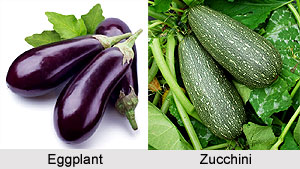 Greek cooking is the culmination of various herbs, spices and essential oil. The culinary of Greece introduces the world to an incredibly rich and diverse array of foods. Each Greek meal is fresh and inviting. The Greek culture has entered India with the coming of Alexandar, the Great. The Greek influence in Indian Food have created the spectacular palette of foods and augmented to the Indian cuisine. However, Greek cooking itself has been influenced by other cultures. It has the traces of Romans style of cooking as well as Turkish influences and those are prominent in the Greek cooking till the present moment.
Greek cooking is the culmination of various herbs, spices and essential oil. The culinary of Greece introduces the world to an incredibly rich and diverse array of foods. Each Greek meal is fresh and inviting. The Greek culture has entered India with the coming of Alexandar, the Great. The Greek influence in Indian Food have created the spectacular palette of foods and augmented to the Indian cuisine. However, Greek cooking itself has been influenced by other cultures. It has the traces of Romans style of cooking as well as Turkish influences and those are prominent in the Greek cooking till the present moment.
India has records of trading with the Greeks, Egyptians, and Romans in ancient times. This interaction with the Mediterranean culture brought various splendid ingredients that are used in Indian cooking. Indian cooking thus became a Fusion cuisine with the blend of Chinese, Aryan as well as Mughal influence. Greek influence in Indian Food led to the introduction of extremely essential herbs and spices to Indian cooking in the recent era. Saffron was previously grown wild in Persia and Asia Minor and at present it is cultivated in Northern India.
Alexander, the great invaded India in 350 B.C and since then northern and eastern parts of the country displayed the Greek influence in Indian Food. Moreover, Greek cuisine is influenced by several other foreign cooking. Most of the Greek foods have names with foreign origins. Alternatively Greece is also the country of organically producing cheeses, oils, fruits, nuts, grains, legumes, and vegetables. These are the foods of the traditional Greek regimen adding variety and nutrition. Greece has gifted the Indian subcontinent with an assortment of ingredients for cooking such as olive and lemon. Greek also introduces several spices, garlic and other herbs such as oregano, basil, mint, and thyme. Greece contributed to the Indian cooking with vegetables such as eggplant and zucchini.
Other spices that are regarded contribution of the Greek influence in Indian Food include fenugreek seeds, and fennel. These are the two prominent spices that add flavor to the Indian culinary. Greece has also brought up utilizing classic elements that is the basic essence of the Greek cuisine. Indian can thus experiment of preparing different dishes adding Greek flavour. Thus Indian Food becomes simple and elegant, with flavours subtle to robust, textures smooth to crunchy, fresh and timeless, nutritious as well as healthy.




















